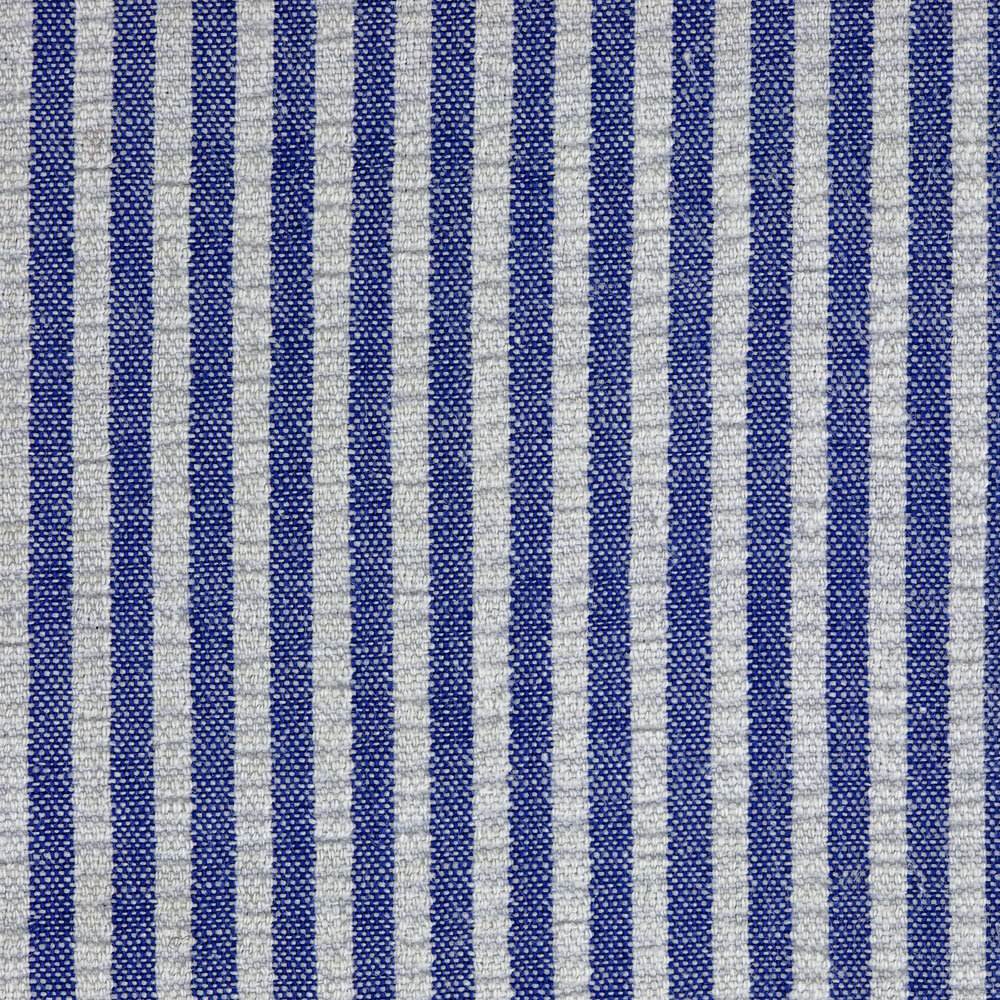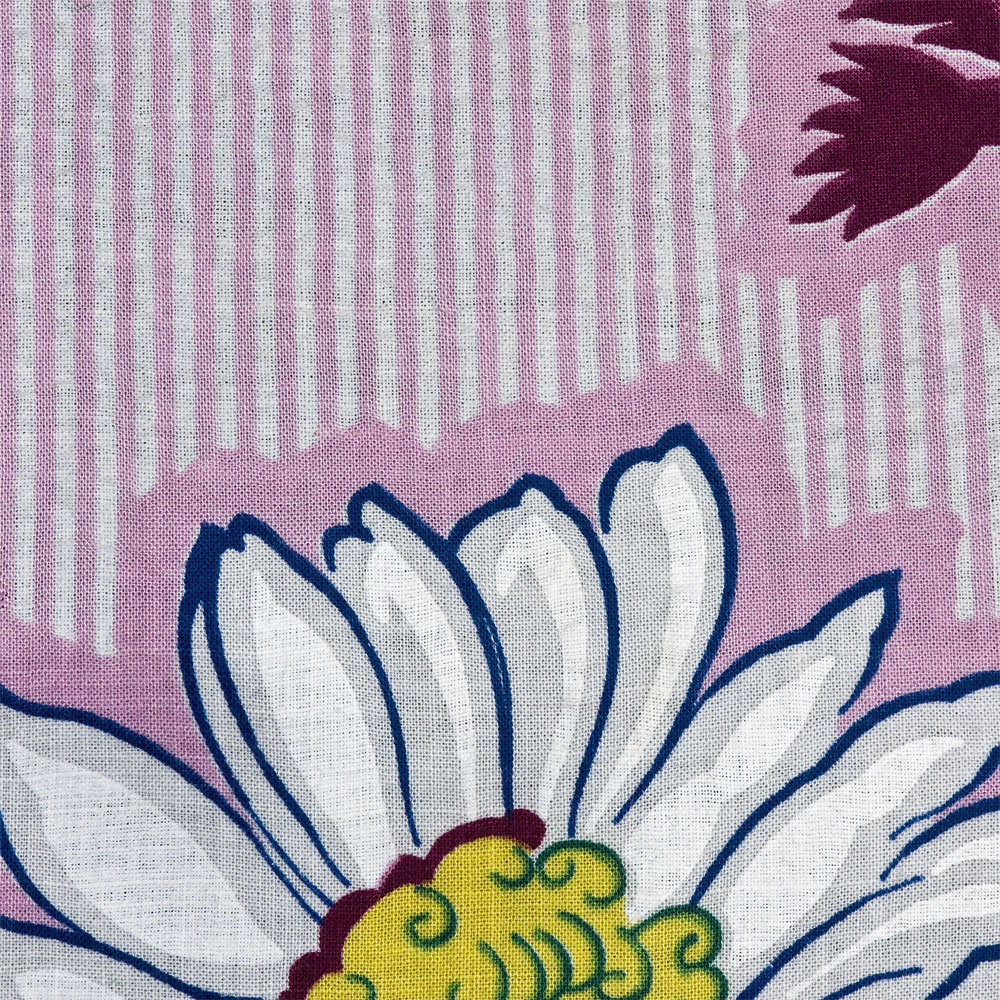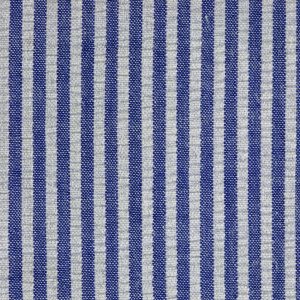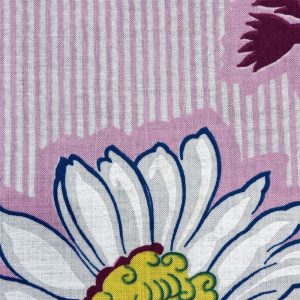Recognized by its crinkled vertical stripes alternating with smooth stripes, seersucker is created by weaving slack yarns in the warp alternating with yarns of normal tension. The stripes may be of varying and various proportions, all one color or two or more colors.
Originally cotton, seersucker is still made of cotton or cotton blends, sometimes manufactured fibers. Since it doesn’t usually need ironing, it has always been popular for summer wear. The name is derived from the Persian for milk and sugar— shir o shakar —presumably due to the smooth and lumped up pairing.
Uses: Dresses, blouses, suits, nightwear
See also:
Plissé



